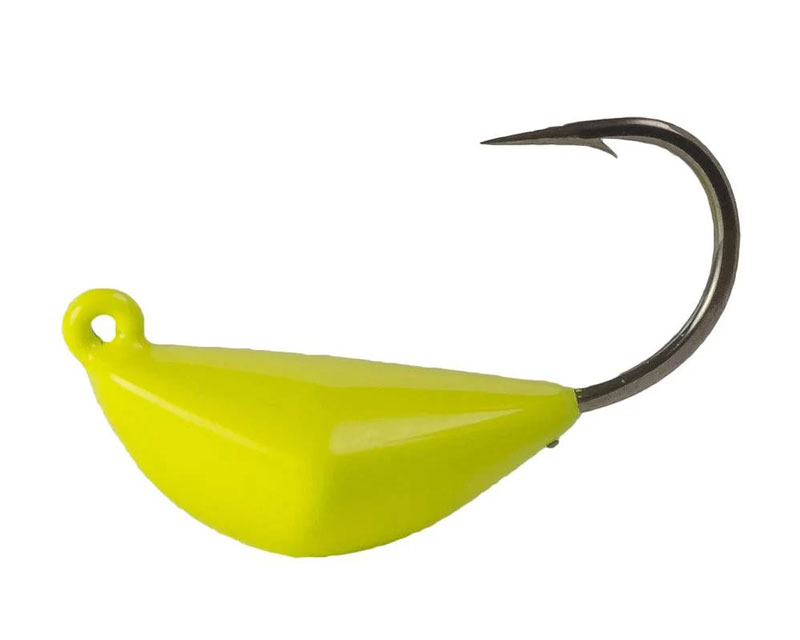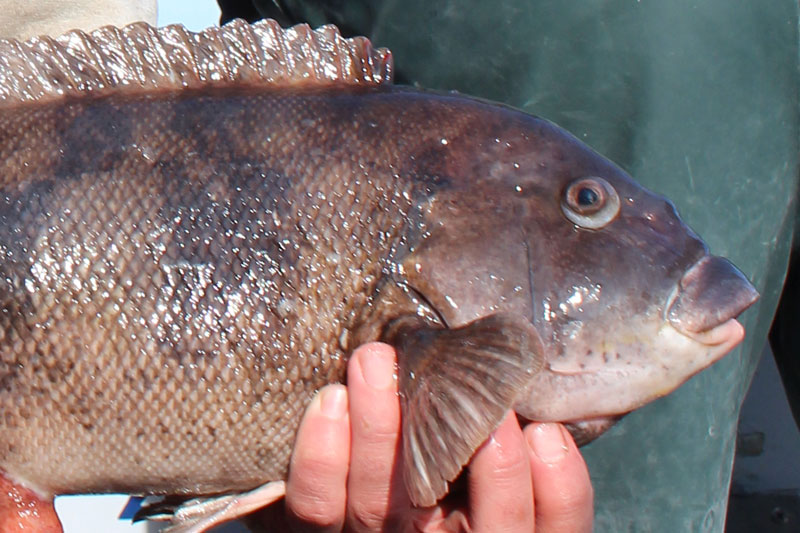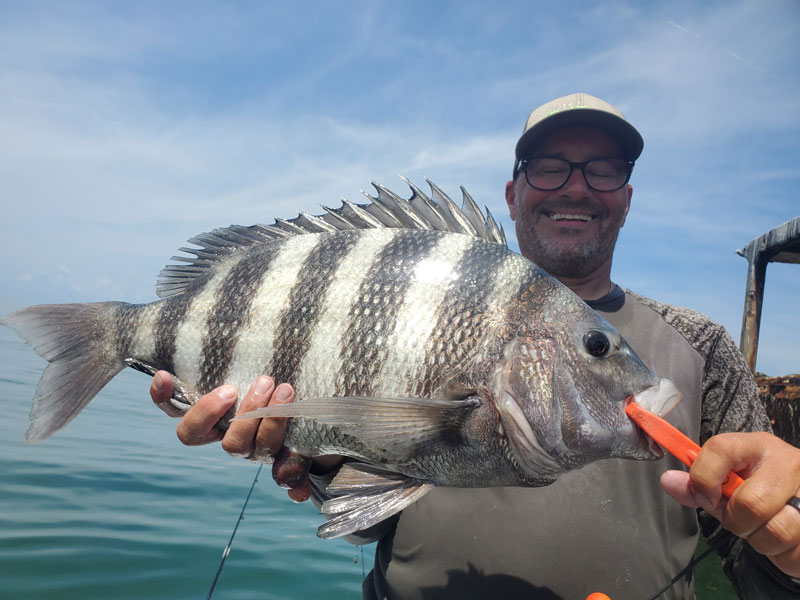A jig head is a jig head is a jig head, right? It has a hook and a lead head. Done deal. Well, sort of. You’ve undoubtedly noticed that there are about six kajillion different shapes, sizes, and varieties of jig heads. Teardrops, coneheads, popeyes, triangles, footballs, boxing gloves, mules, and the list goes on and on. Most of these are for threading on a soft plastic tail or a chunk of bait. But a few, like that mule, have very specific traits that make them ideal for specific fishing situations. And one that Chesapeake Bay and coastal Atlantic anglers need to be familiar with is the bottom sweeper jig.

What is a Bottom Sweeper Jig?
Sweepers are weighted and designed to sink like a rock, land on bottom with the hook pointing up, resist rolling onto the side, and hit potential snags below the attachment point with the head’s curved surface. They also have a very short shank with almost no distance between the end of the head and the beginning of the hook’s bend.
Combining all of these attributes makes for a funny looking jig head, and you couldn’t fish a soft plastic on one if you tried. However, it also results in a head that’s ideal for use around snaggy structure in relatively deep water and/or strong currents. And the idea isn’t to rig it with a plastic at all, but rather to present a natural bait where you might otherwise be using something along the lines of a top-and-bottom rig.
Why Use a Bottom Sweeper Jig?
Bottom Sweepers have a number of advantages over going with the usual bottom rig. First off, you need less overall weight on the line, and thus can use lighter tackle, to keep your bait in the strike zone. Secondly, thanks to that design sweeper jigs tend to slide or bounce off of structure since the one potential fouling point is below the attachment point and is rounded. So snags get reduced, though certainly not eliminated. Top-and-bottom rigs, on the other hand, have multiple snag points including the weight plus both hooks and get snagged with frustrating regularity.
Most important, however, is that a sweeper is connected directly to your line. There are no wire arms and additional leaders between you and the hook, so your bite sensitivity gets a major-league boost and you can feel the slightest nibble or tap.
What to Target with Bottom Sweepers

Toss out a baited sweeper jig and you never know what you’ll catch. As with any other form of fishing, all bets are off as to who will bite — and as soon as you start making predictions you can bet the unexpected will happen. That said, these specific jigs really shine when targeting crustacean-crunching critters like tautog and sheepshead. Both of these species are known for having finicky bites to say the least, and when it comes to turning a nibble into a bent rod, tautog are the undisputed champions of frustrating anglers up and down the coast. Sheepshead score a close second place. By eliminating all the extra hardware and feeling that tap a fraction of a second earlier, you have a better shot at turning frustration into fillets. If, that is, you slam the hook home the moment you feel that tap.
Being designed to fill such a specific niche, bottom sweepers have one more attribute that’s ideal for togs and sheeps: that short hook is also quite stout, and is perfect for lodging into the toothy, boney mouths both of these species happen to have.
Baits for Bottom Sweepers
As a rule, savvy anglers will tip these jigs with crustaceans of one sort or another. Most favor sand fleas, fiddler crabs, or crab chunks, though some are partial to shrimp when fishing a sweeper for sheepshead.

When fishing fleas a whole one can be threaded onto the hook with the point going in the belly and coming out of the back. When fishing crab (blue, green, or white), chunk size depends on the size of the crab and the size of the quarry. Relatively small greens and whites may go on the hook whole or may need to be sliced in half and blue crab will need to be quartered from legal size, at least, to be cut down to a reasonable bait. In any case break off a claw then thread the hook in through the knuckle and into the body section. Fiddlers can go on whole but again, go in through a knuckle to avoid shattering the body’s shell. Shrimp are usually used in tail-only form, threaded on meat-end first with the hook point popping out of the tail, which gives it something firm to grab onto. Regardless, expect that when using shrimp you’ll likely lose plenty of bait so be sure to check it after every significant nibble.
So, maybe a jig head isn’t just a jig head after all. At least, that certainly seems to be the case with the bottom sweeper.
Don’t Sweep History Under the Rug!
“Bottom Sweeper” is a trademarked term by the inventor of this jig head, Capt. Dan Schafer of Insomniac Guide Service in Stone Harbor, NJ. As happens in the tackle biz there are now plenty of other options that are close, if not exact, to the original, which was patented in 2019. You’ll usually see terms like “sea sweeper” or just “sweeper jig” used instead of “Bottom Sweeper” on the packaging of alternate versions. Many of these work just fine, but if you want the original head for Bottom Sweeper Jigs.